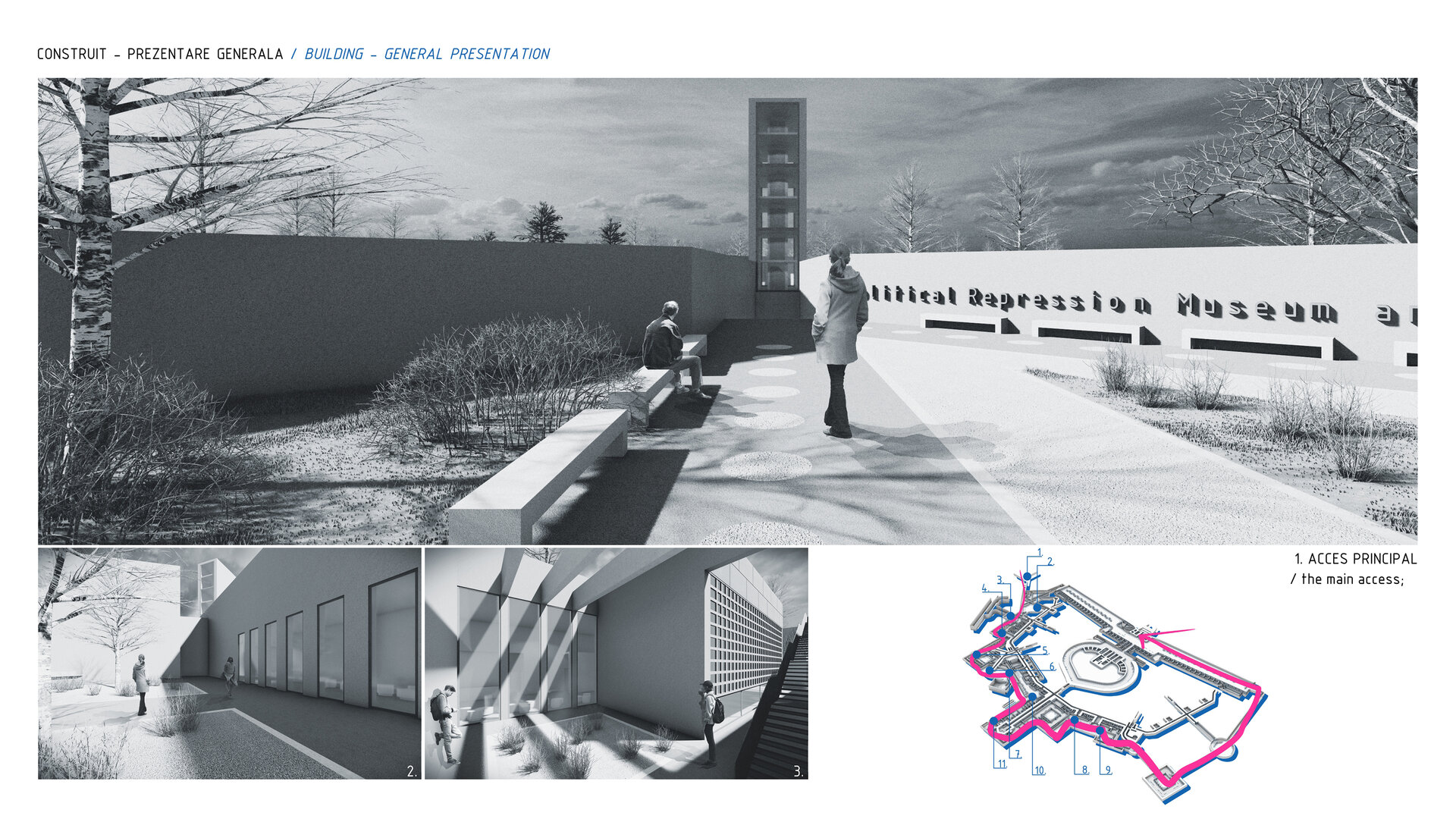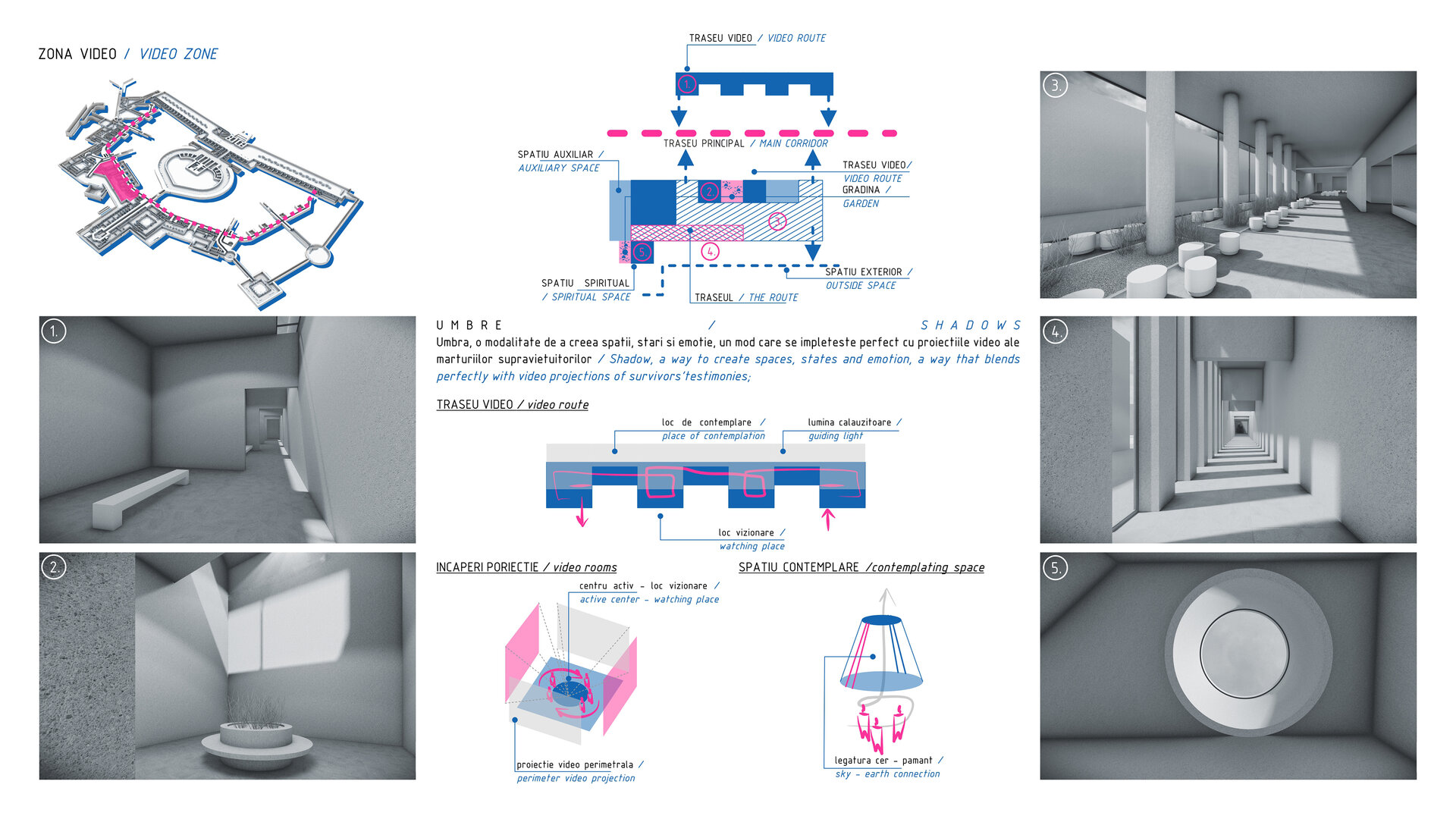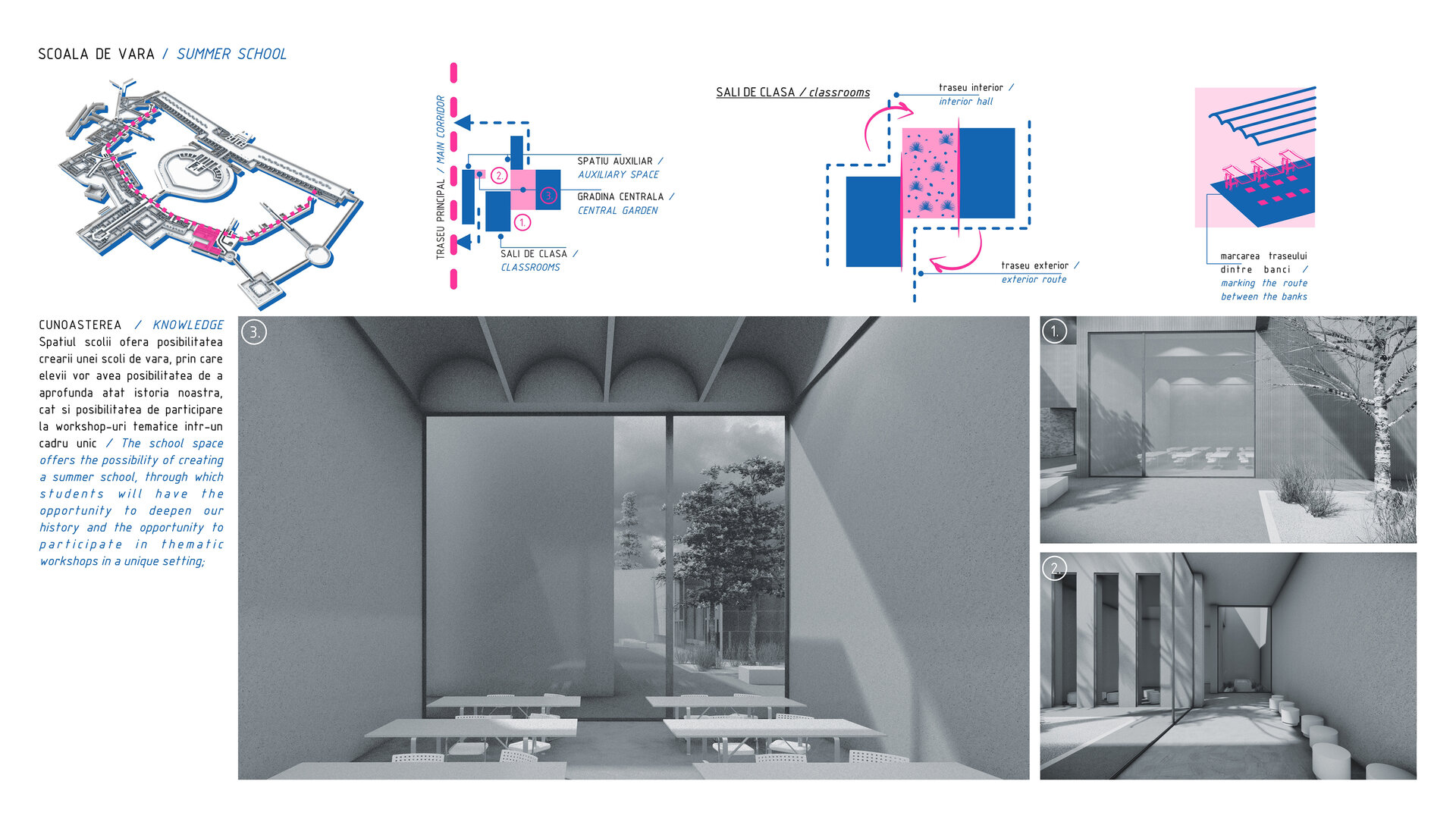
Fort 13 Jilava. Political repression museum and research center
Authors’ Comment
The proposed project consists of a conversion and extension of the current Fort 13 Jilava, with the main purpose of preserving its character and integrity in the context of the 30th anniversary of the 1989 Revolution, when the communist dictatorship was removed. The project presents a study of the existing context and construction from macro to micro, a study that will present the basis, but also the defining elements of the approaches that led to the final intervention solution on the existing, but also the proposal.
I chose this delicate subject for the diploma project following the trips he made in various objectives with high interest for the national cultural heritage. Why Fort 13 Jilava? Because it is a place of psychological value, but also a forerunner of memory for the victims of political repression in communist prisons and labor camps that he had the opportunity to meet in this emotional space. Space that continues to be a place of liberation of the soul, thoughts and memory of those who have been imprisoned here.
The shaping of the project began by identifying first of all the elements that required an intervention for a good functioning of the museum and of the proposed research center. An example is the access of the fort that is inside the current ensemble of the Jilava Penitentiary and which without the organization of organized and guided tours cannot be possible. The identification of the specific elements consisted with those that define the interior and exterior organization of the existing, of the architectural and compositional definitions of the external framework in which it is created.
The proposed project will take place outside the existing built area, by following and joining the underground galleries of the Fort, forming a unitary construction with the existing one, at the memory level, by creating a curatorial route of the permanent exhibition in the existing built area and at the functional level. by creating an area of knowledge and learning about political repression in the proposed new construction.
The project is a complex one, which is based on its integration in the existing context but also on the observance and reinterpretation of the events and emotional states that we found, lived and experienced during the visits to Fort 13 Jilava. What attracted the author's attention on the inside but also on the outside were the spaces that suddenly passed from some wide, where you felt exposed, to some spaces that gave the feeling of corset, but also the smooth transition from dark to light, in especially their shadows and games inside the spaces. Facts that formed the basis of the approach and realization of the project.
- Beyond the ruin. The conversion of the former tobacco warehouse of Isaccea
- Balneo-physio-therapeutic recovery center. Extension of Sylva Villa, Băile Govora
- Shelter with dignity
- The Bucharest City Loop
- Fort 13 Jilava. Political repression museum and research center
- Activating industrial premises – Student Center
- Hotel at Capidava
- Palaeontology research and visitor center – Hațeg District
- Memorial for the jews of Bukovina
- Agri-Park on the Nikolics domain
- Johann Michael Haydn Music Institute
- Creative Industries Factory in London
- Urban Cistern, Amman
- Refunctionalization and extension of the former sanatorium for border guards, Herculane Baths. Centre for body-mind treatment and accomodation
- “Țara Hațegului” International UNESCO Geopark. Fragments. Territorial diversity path
- The Roundhouse: built heritage academy
- Equestrian center of recovery and leisure on the former racecourse of “Nicolae Romanescu” park
- House of Movement. Ballet school and performing arts center in Bucharest
- Lacustrine Resort. The Danube River at Corabia
- Ludoteca
- Extension of the Baths ensamble, Băile Govora
- Drama Memorial
- New Public Architecture as Infill in Historical Context, Bucharest
- ECORIUM Local ecosystem research center
- Artist in Residence – Nae Petrescu Houses – Plantelor Street No. 56-58
- Extention of Public School of Arts and Crafts
- The Castle with Unicorns. Reactivation through school, arts and crafts of the Kornis Castle Ensemble in Mănăstirea Village
- House of games
- A New City Center – Conversion of the Pozzi Ceramic Factory, Laveno, Italy
- Urban Revitalization – Calea Moșilor
- Archaeological cultural center in the Constanta Peninsula
- Lapidarium. Extension of “Vasile Pârvan” Institute of Archaeology, Bucharest
- Pavilion complex within the “Măgura” sculpture camp, Buzău
- Recovery, revitalisation and insertion. Creative hub
- Integration through co-presence – Câmpulung Cultural Center
- C.U.B. Urban revitalization through social inclusion and cultural diversity
- Spatial Connections and Functional Conversion of Customs Warehouse, Bucharest
- ARTnEST – Performing Arts Center on Calea Victoriei
- Trauma and continuity – National Jewish museum, Victory Square, Bucharest
- Technological transformation hub
- The Enchanted Gardens of Ada Kaleh
- The revitalization of the Filipescu Park, Cultural Park Filipescu
- Terry Winery, Dragasani
- Mixed-function tower building (offices-hotel)
- Elca Market Square, Craiova
- The regeneration of Textila Factory
- Via Golden Quadrilateral. C Area. The Flow of Memory in Buciuman Cultural Landscape




















